
Calvinism is a major branch of Protestantism that follows the theological tradition and forms of Christian practice set down by John Calvin and other Reformation-era theologians.

John Calvin was a French theologian, pastor and reformer in Geneva during the Protestant Reformation. He was a principal figure in the development of the system of Christian theology later called Calvinism, aspects of which include the doctrines of predestination and of the absolute sovereignty of God in salvation of the human soul from death and eternal damnation, in which doctrines Calvin was influenced by and elaborated upon the Augustinian and other Christian traditions. Various Congregational, Reformed and Presbyterian churches, which look to Calvin as the chief expositor of their beliefs, have spread throughout the world.
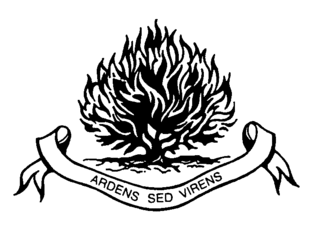
Presbyterianism is a part of the reformed tradition within Protestantism, which traces its origins to Britain, particularly Scotland.

The Reformation was a movement in Western Christianity in 16th-century Europe. Although the Reformation is usually considered to have started with the publication of the Ninety-five Theses by Martin Luther in 1517, there was no schism until the 1521 Edict of Worms. The edicts of the Diet condemned Luther and officially banned citizens of the Holy Roman Empire from defending or propagating his ideas. The end of the Reformation era is disputed, it could be considered to end with the enactment of the confessions of faith which began the Age of Orthodoxy. Other suggested ending years relate to the Counter-Reformation, the Peace of Westphalia, or that it never ended since there are still Protestants today.

Huguenots are an ethnoreligious group of French Protestants.

A Continental Reformed church is a Reformed church that has its origin in the European continent. Prominent subgroups are the Dutch Reformed, the Swiss Reformed, the French Reformed (Huguenots), the Hungarian Reformed, and the Waldensian Church in Italy.

A united church, also called a uniting church, is a church formed from the merger or other form of union of two or more different Protestant denominations.
La Reforma or the Liberal Reform was initiated in Mexico following the ousting of centralist president Antonio López de Santa Anna by a group of liberals under the 1854 Plan de Ayutla. From the liberals' narrow objective to remove a dictator and take power, they expanded their aims to a comprehensive program to remake Mexico governed by liberal principles as embodied by a series of Reform laws and then the Constitution of 1857. The major goals of this movement were to undermine the power of the Catholic Church in Mexico, separate church and state, reduce the power of the Mexican military, and integrate Mexico's large indigenous population as citizens of Mexico and not a protected class. Liberals envisioned secular education as a means to create a Mexican citizenry. The liberals' strategy was to sharply limit the traditional institutional privileges (fueros) of the Catholic Church and the army. The law prohibiting the ownership of land by corporations targeted the holdings of the Catholic Church and indigenous communities - confiscating Church land. Indigenous community lands were held by the community as a whole, not as individual parcels. Liberals sought to create a class of yeoman farmers that held land individually. No class of individualistic peasants developed with the Liberal program emerged, but many merchants acquired land. Many existing landowners expanded their holdings at the expense of peasants, and some upwardly mobile ranch owners, often mestizos, acquired land previously held by communities. Upon the promulgation of the liberal Constitution of 1857, conservatives refused to swear allegiance to it and, instead, formed a conservative government. The result was a civil war known as the Reform War or Three Years' War, waged between conservatives and liberals for three years, ending with the defeat of the conservatives on the battlefield. Victorious liberal president Benito Juárez could not implement the envisioned reforms due to a new political threat. Conservatives had sought another route to regaining power, resulting in their active collaboration with Napoleon III's plans to turn the Mexican Empire into the main American ally of the French empire. Mexican conservatives offered the crown of Mexico to Hapsburg archduke Maximilian. The French invasion and republican resistance to the French Intervention in Mexico lasted from 1862-67. With the defeat of the conservatives and the execution of Maximilian, Juárez again took up his duties as president. In this period from 1867 to 1876, often called the "Restored Republic" liberals had no credible opposition to their implementation of the laws of the Reform embodied in the 1857 Constitution.
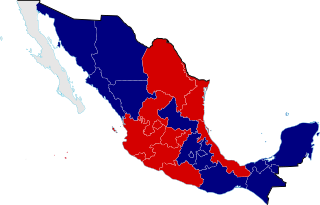
The War of Reform in Mexico, during the Second Federal Republic of Mexico, was the three-year civil war between members of the Liberal Party who had taken power in 1855 under the Plan of Ayutla, and members of the Conservative Party resisting the legitimacy of the government and its radical restructuring of Mexican laws, known as La Reforma. The War of the Reform is one of many episodes of the long struggle between Liberal and Conservative forces that dominated the country’s history in the 19th century. The Liberals wanted to eliminate the political, economic, and cultural power of the Catholic church as well as undermine the role of the Mexican Army. Both the Catholic Church and the Army were protected by corporate or institutional privileges (fueros) established in the colonial era. Liberals sought to create a modern nation-state founded on liberal principles. The Conservatives wanted a centralist government, some even a monarchy, with the Church and military keeping their traditional roles and powers, and with landed and merchant elites maintaining their dominance over the majority mixed-race and indigenous populations of Mexico.

The Reformed Church of France was the main Protestant denomination in France with a Reformed orientation that could be traced back directly to John Calvin. In 2013, the Church merged with the Evangelical Lutheran Church in France to form the United Protestant Church of France.

The World Communion of Reformed Churches (WCRC) is the largest association of Reformed churches in the world. It has 233 member denominations in 110 countries, together claiming 100 million people, thus being the third largest Christian communion in the world after the Roman Catholic Church and the Eastern Orthodox Church. This ecumenical Christian body was formed in June 2010 by the union of the World Alliance of Reformed Churches (WARC) and the Reformed Ecumenical Council (REC).
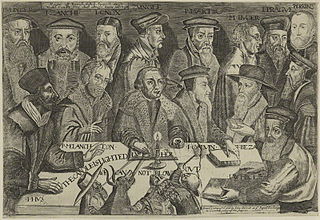
Calvinism originated with the Reformation in Switzerland when Huldrych Zwingli began preaching what would become the first form of the Reformed doctrine in Zürich in 1519.
L'Église réformée du Québec, or "Reformed Church of Quebec", is a small conservative French-speaking Reformed Christian denomination located primarily within the Canadian province of Quebec.

Protestantism is the second largest form of Christianity with collectively between 800 million and more than 900 million adherents worldwide or nearly 40% of all Christians. It originated with the 16th century Reformation, a movement against what its followers perceived to be errors in the Roman Catholic Church. Protestants reject the Roman Catholic doctrine of papal supremacy and sacraments, but disagree among themselves regarding the real presence of Christ in the Eucharist. They emphasize the priesthood of all believers, justification by faith alone rather than by good works, and the highest authority of the Bible alone in faith and morals. The "five solae" summarise basic theological differences in opposition to the Roman Catholic Church.
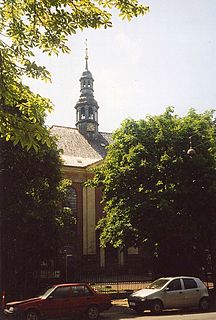
Reformed Church in Gothersgade, opposite Rosenborg Castle, is a church building used by the reformed congregations in Copenhagen, Denmark. Consecrated in 1689, the church was instigated by Queen Charlotte Amalie, consort of King Christian V, who was herself a German Calvinist. The church is noted for its fine Baroque interiors which date from 1730 when it was restored after being damaged in the Copenhagen Fire of 1728.

The Protestant Reformed Church of Alsace and Lorraine is a Reformed denomination in Alsace and Northeastern Lorraine, France. As a church body it enjoys the status as an établissement public du culte.
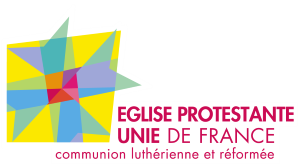
The United Protestant Church of France is the main and largest Protestant church in France, created in 2013 through the unification of the Reformed Church of France and the Evangelical Lutheran Church of France.
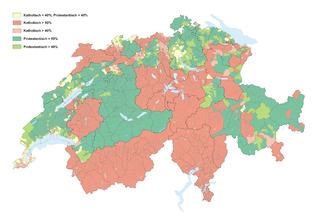
The Swiss Reformed Church is the Reformed branch of Protestantism in Switzerland started in Zürich by Huldrych Zwingli (1484–1531) and spread within a few years to Basel, Bern, St. Gallen, to cities in southern Germany and via Alsace to France.
















